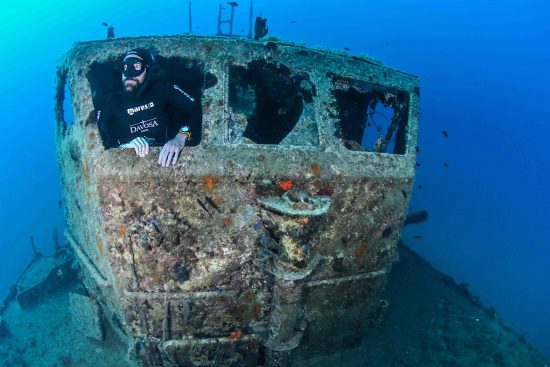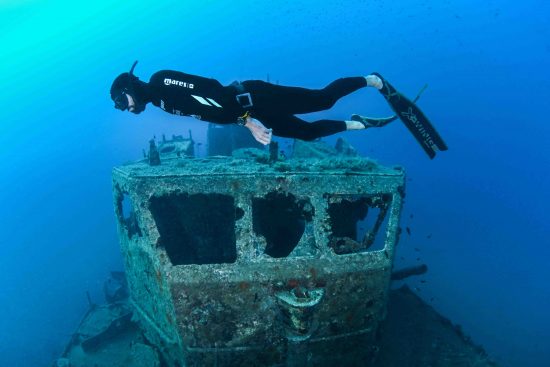



Freediving is exciting in itself, even more so on the wrecks of sunken ships. We recently had the opportunity to interview Nik Linder, one of the most active, experienced instructors in the sport, and see him in action. The stage for his performance was the wreck of the ship 'Patrolac', located at the entrance to the Bay of Kotor, in the bay of Žanjic, Montenegro.
Have you had much experience freediving on shipwrecks? If so, what wrecks have you dived so far?
I have dived in many wrecks, for example, I really like the Cedar Pride in Jordan, or the Thistlegorm in Egypt.
What makes freediving on wrecks special?
As you are "smaller" than a scuba diver, it is much easier to get into the small holes and openings of the wreck, however, of course, you need to be cautious, as you have just one single breath and need to be sure you will find your way out. That's why I enjoy the North Route in Egypt. I have done it a couple of times and we always start with shallow, easy wrecks, doing some more advanced ones later, like the Thistlegorm. Your self-confidence and ability grows during the trip. I also see this with my students during the dive trips which I lead. In the beginning they are always a bit nervous, but they become much more relaxed as the trip goes on.
Also, the light can be fantastic. I remember a wreck in the Bahamas, it was a wreck they had used to practice torpedo shots. It was standing on a reef, so one part was above the water and the other part was very shallow. I could snorkel through it. It was great how the light fell in the wreck, like in a cave or a Cenote.
When we watch you dive on a wreck, it looks very easy. What should a freediver who wants to try something like this pay attention to?
A freediver should always know where the way out is. I am not a big fan of seeing a wreck dive as a challenge to stay underwater for a very long time or go very deep. Like freediving under ice, a situation can become dangerous quite quickly, and in a wreck there are a lot of opportunities to get tangled and sediment can ruin the visibility. I enjoy wrecks where there are a lot of obvious ways out, like the one we went to in Montenegro. It is also important to communicate everything very clearly, so your dive buddies know what you are doing and where you plan to get out of the wreck so they are not waiting at the wrong end.
What equipment did you use for diving in the Adriatic Sea, especially on the Patrolac wreck?
I used the Apnea Instinct 3mm suit, my favorite Viper mask and the X-Wing C-S fins in medium. The shorter fins were quite helpful here, as the longer the fins are, the easier it is to scratch them somewhere.
Interview between Janez Kranjc and Nik Linder
Photos by Ivana OK
 Ivana and Janez
Ivana and Janez 9th November 2023
9th November 2023